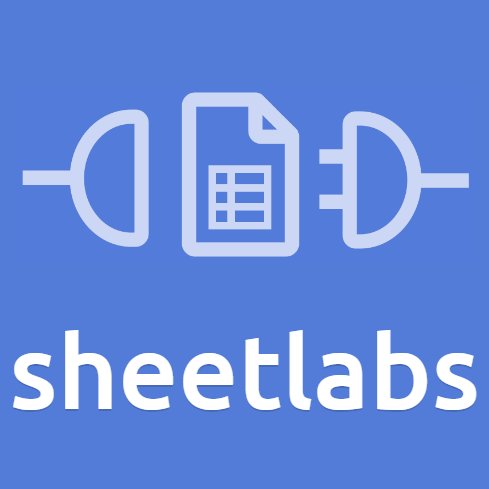They Said So Quotes API offers a complete feature rich REST API access to its quotes platform. This is the documentation for the world famous [quotes API](https://theysaidso.com/api). If you are a subscriber and you are trying this from a console add 'X-TheySaidSo-Api-Secret' header and add your api key as the header value. You can test and play with the API right here on this web page. For using the private end points and subscribing to the API please visit https://theysaidso.com/api.
# Introduction This API returns information about all of the verses in Rig Veda. The results are JSON objects that contain the name of the god, poet, and meter of the verses in Rig Veda, the category of the god and the poet, and the _mandal_ and _sukta_ number. The API uses the Swagger 2.0 specification. # Authentication This is an open API. # Try it out This sandbox can be used to get data for only one kind of resource, that is, to fetch the data for a category being sung to. The remaining resources work a similar fashion. For details, see the reference documentation.
# Introduction This API returns data regarding almost all nouns in vedic literature. The results are JSON objects that contain the word transliterated to the Roman script, the word in the Nagari script, the meaning of the word, and the category the word belongs to. Proper nouns are not included (yet). The API uses the Swagger 2.0 specification. # Authentication This is an open API. # Try it out This sandbox can be used to get data for only one kind of resource, that is, to fetch data for a string contained in the meaning of any of the words. The remaining resources work a similar fashion. For details, see the reference documentation.
This API provides locations of City of Surrey traffic loops and the corresponding traffic loop counts in 15 minute intervals. While the counts are broken up by 15 minute intervals, the data is currently loaded only once per day. We are hoping to increase this frequency to at least once every hour. The LOOP_ID field is common to both datasets and can be used to cross-reference them.
Our unified API brings together data across all modes of transport into a single RESTful API. This API provides access to the most highly requested realtime and status infomation across all the modes of transport, in a single and consistent way. Access to the developer documentation is available at https://api.tfl.gov.uk
API v3 targets v2 functionality with a few minor additions. The API is accessible via https://api.thetvdb.com and provides the following REST endpoints in JSON format.
How to use this API documentation
----------------
You may browse the API routes without authentication, but if you wish to send requests to the API and see response data, then you must authenticate.
1. Obtain a JWT token by `POST`ing to the `/login` route in the `Authentication` section with your API key and credentials.
1. Paste the JWT token from the response into the "JWT Token" field at the top of the page and click the 'Add Token' button.
You will now be able to use the remaining routes to send requests to the API and get a response.
Language Selection
----------------
Language selection is done via the `Accept-Language` header. At the moment, you may only pass one language abbreviation in the header at a time. Valid language abbreviations can be found at the `/languages` route..
Authentication
----------------
Authentication to use the API is similar to the How-to section above. Users must `POST` to the `/login` route with their API key and credentials in the following format in order to obtain a JWT token.
`{"apikey":"APIKEY","username":"USERNAME","userkey":"USERKEY"}`
Note that the username and key are ONLY required for the `/user` routes. The user's key is labled `Account Identifier` in the account section of the main site.
The token is then used in all subsequent requests by providing it in the `Authorization` header. The header will look like: `Authorization: Bearer
The Benefits Intake API allows authorized third-party systems used by Veteran Service Organizations (VSOs), agencies, and Veterans to digitally submit VA benefits claim documents directly to the Veterans Benefits Administration's (VBA) claims intake process. This API handles documents related to the following benefit claim types:
* Compensation
* Pension/Survivors Benefits
* Education
* Fiduciary
* Insurance
* Veteran Readiness & Employment (VRE)
* Board of Veteran Appeals (BVA)
This API also provides submission status updates until documents are successfully established for VBA claim processing, eliminating the need for users to switch between systems to manually check whether documents have been successfully uploaded.
## Background
This API provides a secure, efficient, and tracked alternative to mail or fax for VA benefit claim document submissions. Documents are uploaded directly to the VBA so they can be processed as quickly as possible.
## Technical overview
The Benefits Intake API first provides an upload location and unique submission identifier, and then accepts a payload consisting of a document in PDF format, zero or more optional attachments in PDF format, and some JSON metadata.
The metadata describes the document and attachments, and identifies the person for whom it is being submitted. This payload is encoded as binary multipart/form-data (not base64). The unique identifier supplied with the payload can subsequently be used to request the processing status of the uploaded document package.
To avoid errors and processing delays, API consumers are encouraged to validate the `zipcode`,`fileNumber`, `veteranFirstName`, `veteranLastName` and `businessLine` fields before submission according to their description in the DocumentUploadMetadata model and use the 'businessLine' attribute for the most efficient processing. Additionally, please ensure no PDF user passwords are used in submitted PDFs.
### Attachment & file size limits
There is no limit on the number of files a payload can contain, but size limits do apply.
* Uploaded documents cannot be larger than 21" x 21"
* The entire payload cannot exceed 5 GB
* No single file in a payload can exceed 100 MB
### Date of receipt
The date that documents are successfully submitted through the Benefits Intake API is used as the official VA date of receipt. However, note that until a document status of `received`, `processing`, `success`, or `vbms` is returned, a client cannot consider the document received by VA.
A status of `received` means that the document package has been transmitted, but may not be validated. Any errors with the document package, such as unreadable PDFs or a Veteran not found, will cause the status to change to `error`.
If the document status is `error`, VA has not received the submission and cannot honor the submission date as the date of receipt.
### Authentication and Authorization
API requests are authorized through a symmetric API token, provided in an HTTP header with name 'apikey'. [Request an API key.](https://developer.va.gov/apply)
### Testing in the sandbox environment
In the sandbox environment, the final status of a submission is `received` and submissions do not actually progress to the central mail repository or VBMS.
Progress beyond the `received` status can be simulated for testing. We allow passing in a `Status-Override` header on the `/uploads/{id}` endpoint so that you can change the status of your submission to simulate the various scenarios.
The available statuses are `pending`, `uploaded`, `received`, `processing`, `success`, `vbms`, and `error`. The meaning of the various statuses is listed below in Models under DocumentUploadStatusAttributes.
### Test data
We use mock test data in the sandbox environment. Data is not sent upstream and it is not necessary to align submitted test data with any other systems' data.
### Validating documents
Use the POST `/uploads/validate_document` endpoint to make sure your documents will pass system file requirements and
validations before you send them through the submissions process. This step is optional but decreases the likelihood
of individual document errors during the submission process.
Validations performed:
* Document is a valid PDF (Note: `Content-Type` header value must be "application/pdf")
* Document does not have a user password (an owner password is acceptable)
* File size does not exceed 100 MB
* Page size does not exceed 21" x 21"
### Upload operation
Allows a client to upload a multi-part document package (form + attachments + metadata).
1. Client Request: POST https://sandbox-api.va.gov/services/vba_documents/v1/
* No request body or parameters required
2. Service Response: A JSON API object with the following attributes:
* `guid`: An identifier used for subsequent status requests
* `location`: A URL to which the actual document package payload can be submitted in the next step. The URL is specific to this upload request, and should not be re-used for subsequent uploads. The URL is valid for 900 seconds (15 minutes) from the time of this response. If the location is not used within 15 minutes, the GUID will expire. Once expired, status checks on the GUID will return a status of `expired`.
* Note: If, after you've submitted a document, the status hasn't changed to `uploaded` before 15 minutes has elapsed, we recommend retrying the upload in order to make sure the document properly reaches our servers. If the upload continues to fail, try encoding the payload as Base64 (See below).
3. Client Request: PUT to the location URL returned in Step 2.
* Request body should be encoded as binary multipart/form-data (base64 also available - see details below), equivalent to that generated by an HTML form submission or using "curl -F…". The format is described in more detail below.
* No `apikey` authorization header is required for this request, as authorization is embedded in the signed location URL.
4. Service Response: The HTTP status indicates whether the upload was successful.
* Additionally, the response includes an ETag header containing an MD5 hash of the submitted payload. This can be compared to the submitted payload to ensure data integrity of the upload.
### Status caching
Due to current system limitations, data for the `/uploads/report` endpoint is cached for one hour.
A request to the `/uploads/{id}` endpoint will return a real-time status for that GUID, and update its status in `/uploads/report`.
The `updated_at` field indicates the last time the status for a given GUID was updated.
### Document Submission Statuses
**Important note:** a submission has not been received by VA until it has a status of Received, Processing, Success,
or VBMS. Detailed descriptions of what each status means are found in this table.
| Status | What it means |
| --- | --- |
| **Pending** | Initial status.
Indicates no document package has been uploaded yet.
Date of Receipt is not yet established with this status |
| **Uploaded** | Indicates document package has been successfully uploaded (PUT) from your system to the API server but has not yet been validated.
Date of Receipt is not yet established with this status. Any errors with the document package, such as having an unreadable PDF, may cause an Error status. |
| **Received** | Indicates document package has been received upstream of the API and is awaiting Processing.
The VA Date of Receipt is set when this status is achieved.
This is the final status in the sandbox environment unless further progress is simulated. |
| **Processing**| Indicates the document package is being validated, processed, and made ready to route and work. |
| **Success** | Indicates the document package has been successfully received within VA's mail handling system.
Success is the final status for a small percentage of submitted packages with claim types, Veteran types, or exception processes that are not worked in VBMS. Most submissions reach a Success status within 1 business day. A small portion will take longer; however, some submissions may take up to 2 weeks to reach a Success status. |
| **VBMS** | Indicates this document package was successfully uploaded into a Veteran's eFolder within VBMS.
On average, submissions reach VBMS status within 3 business days; however, processing times vary and some submissions may remain in a Success status for several weeks before reaching a VBMS status.
Some document packages are worked in VA systems other than VBMS. For these submissions, Success is the final status. |
| **Error** | Indicates that there was an error. Refer to the error code and message for further information. |
| **Expired** | After a POST request, there is a 15-minute window during which documents must be uploaded via a PUT request.
An Expired status means the documents were not successfully uploaded within this 15-minute window. We recommend coding to retry unsuccessful uploads within 15 minutes using the same submission in case of connection issues. |
### Optional Base64 encoding
Base64 is an encoding scheme that converts binary data into text format, so that encoded textual data can be easily transported over networks uncorrupted and without data loss.
Base64 can be used to encode binary multipart/form-data it in its entirety. Note that the whole payload must be encoded, not individual parts/attachments.
After encoding your payload, you'll be required to preface your base64 string with `data:multipart/form-data;base64,` in order to allow our system to distinguish the file type. Your final string payload would look something like `data:multipart/form-data;base64,(encryption string)==` and close with the standard == marker. Note that the multipart boundaries i.e. -----WebKitFormBoundaryVfOwzCyvug0JmWYo and ending ------WebKitFormBoundaryVfOwzCyvug0JmWYo- must also be included.
### Consumer onboarding process
When you're ready to move to production, [request a production API key.](https://developer.va.gov/go-live)
The Veteran Confirmation API allows you to confirm Veteran status for a given person. This can be useful for offering Veterans discounts or other benefits. The API will only return “Confirmed” or “Not Confirmed”. ## Quickstart Guide ### 1. Get Access Credentials Get started by filling out the form on the [Apply for VA Lighthouse Developer Access](https://developer.va.gov/apply) page. After submitting a request, you will receive your credentials for using the API in the Development environment, which allows you to try it out with mock data before moving to the Production environment. ### 2. Test the API In the endpoint documentation below, we've provided a curl command builder for trying out the API before implementation with your app. Use [Test User](https://github.com/department-of-veterans-affairs/vets-api-clients/blob/master/test_accounts/confirmation_test_accounts.md) attributes to populate the request body. ### 3. Build your app The base URI for the Veteran Confirmation API in the Sandbox environment is: https://sandbox-api.va.gov/services/veteran_confirmation/v0 In this environment, use attributes from the list of [Test Users](https://github.com/department-of-veterans-affairs/vets-api-clients/blob/master/test_accounts/confirmation_test_accounts.md). Only Test Users can return a `"confirmed"` response. Check out some of our [sample apps](https://github.com/department-of-veterans-affairs/vets-api-clients). Please visit our VA Lighthouse [Support portal](https://developer.va.gov/support) should you need further assistance. ### 4. Show us a demo and get access to the Production environment After building your app, we ask that you give us a demo before we set you up with production credentials. Please see the [Path to Production](https://developer.va.gov/go-live) page for more details. ## Authorization This API requires an API key in combination with identifiable information for the person being confirmed listed below. API requests are authorized through a symmetric API token provided in an HTTP header with name `apikey`. Including more information has a better chance of making a match and returning a Confirmed status. ### Required information: * First Name * Last Name * Date of Birth * Social Security Number ### Optional information: * Middle Name * Gender ## Reference ### Sandbox vs. Production Data APIs accessed via the Sandbox environment are using the same underlying logic as VA’s production APIs; only the underlying data store is different. ### Master Veteran Index (MVI) The Master Veteran Index confirms a user's identity. In Production, several factors are considered to confirm identity. These include: a user’s first name, last name, date of birth and Social Security number. The MVI is mocked in the Sandbox environment. In this environment, the only factor used to confirm identity is the Social Security number. ### Rate Limiting We implemented basic rate limiting of 60 requests per minute. If you exceed this quota, your request will return a 429 status code. You may petition for increased rate limits by emailing and requests will be decided on a case by case basis. ### Raw Open API Spec https://api.va.gov/services/veteran_confirmation/docs/v0/api
API for EnteroBase (https://enterobase.warwick.ac.uk) EnteroBase is a user-friendly online resource, where users can upload their own sequencing data for de novo assembly by a stream-lined pipeline. The assemblies are used for calling MLST and wgMLST patterns, allowing users to compare their strains to publically available genotyping data from other EnteroBase users, GenBank and classical MLST databases. Click here to find how to get and use an API token: http://bit.ly/1TKlaOU
⚠️DEPRECATION WARNING⚠️
This version of the WeGA API specification is outdated and superseded by [version 1.1.0](https://weber-gesamtausgabe.de/api/v1/openapi.json).
For feedback or requests about this API please contact stadler@weber-gesamtausgabe.de or start the discussion at https://github.com/Edirom/WeGA-WebApp








